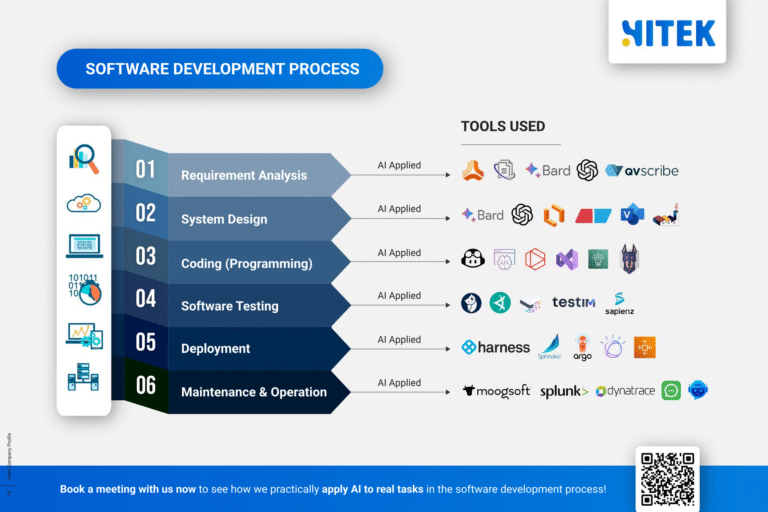In a world where smartphones are practically extensions of our hands, businesses are racing to create apps that resonate with users across devices. But here’s the catch: developing separate apps for iOS and Android can be time-consuming, expensive, and downright inefficient. Enter cross-platform app development—a game-changing approach that lets you build one app that works seamlessly on multiple platforms.
For Australian businesses looking to expand their digital footprint, cross-platform development isn’t just a trend; it’s a strategic move. Whether you’re a startup in Sydney or an established enterprise in Melbourne, understanding this approach can save you time, money, and resources while reaching a broader audience.
So, what exactly is cross-platform app development, and why should Australian businesses care? Let’s break it down.
Contents
ToggleWhat Is Cross-Platform App Development?
Cross-platform app development creates mobile applications that can run on multiple operating systems, such as iOS and Android, using a single codebase. Instead of writing separate code for each platform, developers use frameworks like Flutter, React Native, or Xamarin to build apps that function consistently across devices.
Think of it as crafting a universal key that unlocks every door. Whether your customers use an iPhone in Brisbane or an Android tablet in Perth, they’ll have the same seamless experience.
Why Cross-Platform Development Matters for Australian Businesses
Australia’s mobile app market is booming, with over 20 million smartphone users as of 2023. For businesses, this presents a massive opportunity—but also a challenge. How do you cater to iOS and Android users without blowing your budget?
Here’s where cross-platform development shines:
- Cost Efficiency: Building one app instead of two significantly reduces development costs.
- Faster Time-to-Market: A single codebase means quicker development and deployment.
- Consistent User Experience: Users get the same look and feel regardless of their device.
- Easier Maintenance: Updates and bug fixes only need to be applied once.
For Australian businesses, these advantages are particularly appealing. With a geographically dispersed population, reaching users across different regions and devices is crucial. Cross-platform development ensures your app is accessible to everyone, from tech-savvy millennials in Melbourne to older adults in regional areas.
Popular Cross-Platform Development Frameworks
Not all frameworks are created equal. Here’s a quick rundown of the top tools Australian developers are using:
| Framework | Key Features | Best For |
|---|---|---|
| Flutter | Fast performance, customizable UI, backed by Google | High-performance apps with rich visuals |
| React Native | It uses JavaScript, enormous community support, reusable components | Apps requiring frequent updates |
| Xamarin | The native-like performance integrates with Microsoft tools | Enterprises with existing .NET systems |
Each framework has strengths, so the choice depends on your business needs and technical requirements. For instance, Flutter is ideal for visually stunning apps, while React Native is perfect for teams already familiar with JavaScript.
Challenges of Cross-Platform Development
While the benefits are clear, cross-platform development isn’t without its hurdles. Some common challenges include:
- Performance Limitations: Cross-platform apps may not be as fast or responsive as native apps, especially for graphics-intensive tasks.
- Limited Access to Native Features: Some platform-specific features may require additional workarounds.
- Design Consistency: Ensuring the app looks and feels native on iOS and Android can be tricky.
However, these challenges can be effectively managed with the right development team and tools.
How Australian Businesses Can Get Started
If you’re considering cross-platform app development, here’s a step-by-step guide to get started:
- Define Your Goals: What do you want your app to achieve? Clarity is key, whether boosting sales, improving customer engagement, or streamlining operations.
- Choose the Right Framework: Evaluate your options based on your app’s requirements and your team’s expertise.
- Hire Skilled Developers: Look for a development team with experience in cross-platform frameworks.
- Test Thoroughly: Ensure your app performs well on iOS and Android devices.
- Launch and Iterate: Gather user feedback and make improvements over time.
Partnering with a local development agency can be brilliant for Australian businesses. Not only do they understand the local market, but they can also provide ongoing support and maintenance.
The Future of Cross-Platform Development in Australia
As technology continues to evolve, cross-platform development is becoming more sophisticated. With advancements in frameworks and tools, the gap between cross-platform and native apps is narrowing. This means more opportunities for Australian businesses to create innovative, cost-effective apps that resonate with users.
Moreover, as 5G networks expand across Australia, the demand for high-performance apps will only grow. Cross-platform development is well-positioned to meet this demand, offering a scalable solution for businesses of all sizes.
Ready to Build Your Cross-Platform App?
Cross-platform app development is more than just a technical solution; it’s a strategic advantage for Australian businesses. By embracing this approach, you can reach more users, save on development costs, and stay ahead of the competition.
If you’re ready to take the plunge, explore frameworks like Flutter or React Native. And if you need expert guidance, consider contacting a trusted development partner who can bring your vision to life.
The future of mobile apps is here—and it’s cross-platform. Are you ready to join the movement?
Got questions about cross-platform app development? Drop them in the comments below, or contact us for a free consultation. Let’s build something amazing together!









